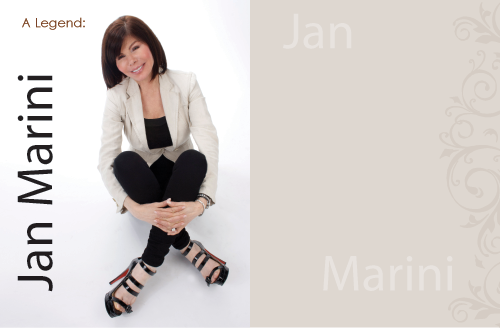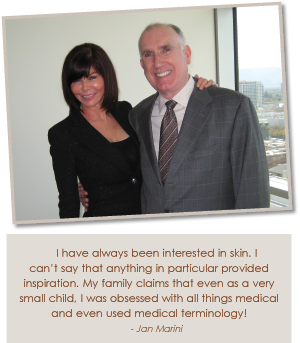Although unable to officially “diagnose” a skin condition, the skin care professional or licensed aesthetician is often the first line of defense with the opportunity to notice warning signs in a client’s skin, and to provide a referral to a trusted dermatologist for further evaluation and diagnosis. The purpose of this article is to provide the skin care professional with facts about visible aging and skin cancer, post-summer skin check tips, daily prevention tips, and how geographic differences influence the skin barrier.
Visible Aging and Skin Cancer Facts
In adults, age 35 or older, the majority of sun exposure that contributes to visible aging and other serious skin conditions has already occurred by age 18. Any cell damage occurring from sun exposure takes five to 25 years to show signs of skin aging (extrinsic aging). These visible changes include fine lines, wrinkles, irregular brown or lighter spots, fragile and lax skin texture, roughness, broken capillaries, and precancerous and cancerous growths.
At any age, it’s never too late to protect oneself from the damaging effects of the sun; also, not every person who is exposed to the sun will develop skin cancer. However, this year about one and a quarter million Americans will develop one of the four most common types of skin cancer.
Basal cell carcinoma spreads internally and kills about 1,000 people a year by direct extension into the brain from sites around the nose, mouth, and ears. Squamous cell carcinoma is a cancer that spreads depending on how quickly the cancerous cells mature. Surgery is the only treatment option for both squamous cell and basal cell cancers. These types of cancers are more aggressive and kill about 2,500 Americans per year.
Malignant melanoma kills nearly 10,000 people a year. Chemotherapy or radiation treatments are ineffective in treating melanoma. When located on palms, soles, genitals, and mucous membranes melanoma is more aggressive. Tragically, recurrences have been reported over 15 years after excision of the initial visible lesion. Its incidence is doubling every eight years.
The premalignant tumor, actinic keratoses, now afflicts 50 percent of 50+ year-old Americans. Further, Cutaneous T cell lymphoma is increasing in incidence to afflict about 12,000 Americans per year. Unlike the basal cell or squamous cell cancers, malignant melanoma is not treated by surgery. Over 90 percent of these cancers will appear on sun-exposed skin, usually on the face, neck, ears, forearms, and hands. The average age of onset of all premalignant and malignant tumors is decreasing. What's more, every hour an American dies from skin cancer.
Post-Summer Skin Checks
Offering your clients a post-summer skin check will accomplish several things: One: it shows your clients that you truly care about their health and well-being. Two: it provides the opportunity to catch sun damage that could be potentially harmful. Three: it provides a way to encourage individuals who do not see a dermatologist at all to begin regular exams. And four: this is a great time to encourage your client to use a daily sunscreen with broad-spectrum protection. Keep in mind that individuals with naturally fair skin and light eyes, or who have multiple moles or freckles and/or a family history of skin cancer are at higher risk.
Use one of the following phrases to encourage your clients to feel comfortable with a post-summer skin check:
“I really care about your well-being. If you spent any time in the sun this summer, it is important that we do a quick check to make sure your skin hasn’t been visibly damaged.”
“Even if you perform your own skin checks, it might be easier for me to see areas that are difficult for you to check yourself, like on your back or your neck.”
“Catching possible pre-cancers on the skin will also help you to take measures to ensure future damage or spreading doesn’t occur.”
During the skin check, it is important to know what you are looking for. Keep the following points in mind:
- 1)Ask if there have been any changes in naturally occurring moles, skin growths, or freckles. Have any of them grown in size? Does the size appear to be misshapen (asymmetrical)? Is the texture rough? Have any lesions begun to itch or bleed?
- 2)Notice whether the client has any new marks that you may not have noticed before. Check the hair-line, face, ears, and neck. Ask the client if they are comfortable with you checking their shoulders and back.
- 3)Melanomas can occur in non-exposed parts of the body as well, such as inside the bikini area or the bottoms of the feet.
Know the basic A-B-C-D-Es of recognizing the symptoms of melanoma:
- A: Asymmetry – Most early melanomas are asymmetrical. This means that you cannot draw a line down the middle and have equal parts on each side.
- B: Borders – The borders are uneven.
- C: Color – Varied shades of brown, tan, or black are often the first sign of melanoma.
- D: Diameter – Early melanomas tend to grow larger than common moles. Pay attention to spots that are larger than the diameter of a pencil eraser.
- E: Evolving – Changing in any parameter – color, size, shape, feel.
Know the basics of recognizing the symptoms of the other skin cancers:
Premalignant actinic keratoses look like scaly, pink, red, or brownish patches. They may have tenderness or itch with sun exposure. For basal cell cancer, look for a bump, a pimple that hasn’t healed, or a thickened site that is growing. They usually appear pearly in color, with or without pinkness, or brown. Clear liquid may seep from the site. For Squamous cell cancer, look for a non-healing red, crusted, or scaly bump. Like the basal cell, it may bleed. Finally, Cutaneous T cell lymphoma is an extremely itchy, non-healing dermatitis.
It is imperative that you encourage your client to immediately see their dermatologist if you do notice anything that you may think is unusual. It may be helpful to inform your client as to what to expect so they feel comfortable and educated, and what questions they should ask their dermatologist. Many times, what may appear to be abnormal to the aesthetician may not actually be serious, but it always helps to have a physician’s opinion.
During the exam at the dermatologist office, the patient should show the physician which area was observed to be problematic. The patient should also ask that the physician perform a thorough spot check, or to document the skin check with photos, in order to track changes in moles and freckles. This will allow the physician to be familiar with current lesions, in case things change in the future.
Daily Prevention
No matter where you live, it is best to avoid the direct rays of the sun during the hours of 10:00 a.m. to 3:00 p.m., when the ultraviolet (UV) light rays are the strongest. If one cannot avoid sun exposure during these hours, daily use of a sunscreen containing broad-spectrum protection is recommended, with a SPF rating of 29 or higher.
The spectrum of UV light includes long wave UVA, which induces wrinkling and most of the signs of aging, along with skin cancers including melanoma. UVA rays penetrate light clothing. Only recently has a quantification system for sunscreens protecting against UVA been proposed. This specific protection system is rated one to four stars based on protection on two laboratory tests.
Traditional sun protection factor (SPF) is based on laboratory evaluation of protection against UVB established by solar simulator. Unfortunately, real world studies showed the average amount of sunscreen applied is only 25 percent of the recommended amount. This means that SPF 15 only gives a true protection of SPF 3, the same as a white t-shirt. Due to the light application of sunscreen and a study showing that SPF 30 decreases the number of abnormal sunburn cells by 68 percent more than SPF 15 with UVA exposure, it is now recommended that an SPF of at least 29 be applied. But environmental factors play a huge role in real world protection. These include ambient temperature and humidity; activity level of the client; presence of wind, snow, and water; oiliness of skin; and barrier integrity. In other words, sensitive skin and those with skin conditions and diseases are much more at risk for light damage. Thus, it is imperative to recommend that your clients use the highest SPF product they would like to use.
The newest sunscreen application recommendation is to apply a generous coat of sunscreen to all exposed areas (including the top of feet when wearing sandals) to cool, dry skin in the morning. Then about 30 minutes later, after eating, dressing, and brushing the teeth, apply a second generous coat. This will protect all day and reapplication will not be needed unless one swims or vigorously exercises for more than an hour. Significant protection occurs when wearing a cloth hat (not straw!) with at least a four inch brim. Baseball caps might be considered “cancer caps” since they offer minimal to no protection for ears, neck, and sides of the face. Clothing, especially lightly colored and/or wet, provides a SPF of two to four. In the last decade, clothing products with built in protection in the SPF 30 range have been introduced, along with an additive that can be included when washing clothing that adds SPF protection.
One other way to improve sun protection against UVA is to take certain oral supplements. The ones documented by clinical studies include vitamin C 500 mg, vitamin 200 IU, melatonin 3 mg, and green tea 200 mg daily. There is also an oral sunscreen now on the market.
The Skin Barrier and Geography
Finally, the best treatment is to not let the process begin. This means the first line of defense, the skin, must be at its optimum health. In other words, the skin barrier must be at its maximum. In addition, destructive chronic inflammation must be controlled with anti-inflammatory products.
Each geographic region in the
In conclusion, aestheticians have an incredible opportunity to reach people in a way that physicians cannot. Often, an aesthetician will identify a problematic area early enough to prevent anything more serious from occurring, such as a squamous cell or melanoma. As a skin care professional, providing your clients the best care includes ensuring that these simple preventative measures be taken.
Dr. Carl R. Thornfeldt is President, CEO, and Chief Scientific Officer of Episciences, Inc. He is a practicing dermatologist with 24 years of skin research experience, 21






 Those who know Jan Marini refer to her as a visionary. While Jan might agree in principle, she sees this characterization as both a strength and a weakness. She envies those who are able to savor the moment. Where others view life in snapshots that capture real time, Jan sees broad borderless landscapes and endless possibilities. She does not see a product, she sees a business and in that same instance her mind is flooded with the business plan and all the accompanying details. Even when she is not envisioning empires, she is never satisfied with the status quo.
Those who know Jan Marini refer to her as a visionary. While Jan might agree in principle, she sees this characterization as both a strength and a weakness. She envies those who are able to savor the moment. Where others view life in snapshots that capture real time, Jan sees broad borderless landscapes and endless possibilities. She does not see a product, she sees a business and in that same instance her mind is flooded with the business plan and all the accompanying details. Even when she is not envisioning empires, she is never satisfied with the status quo.